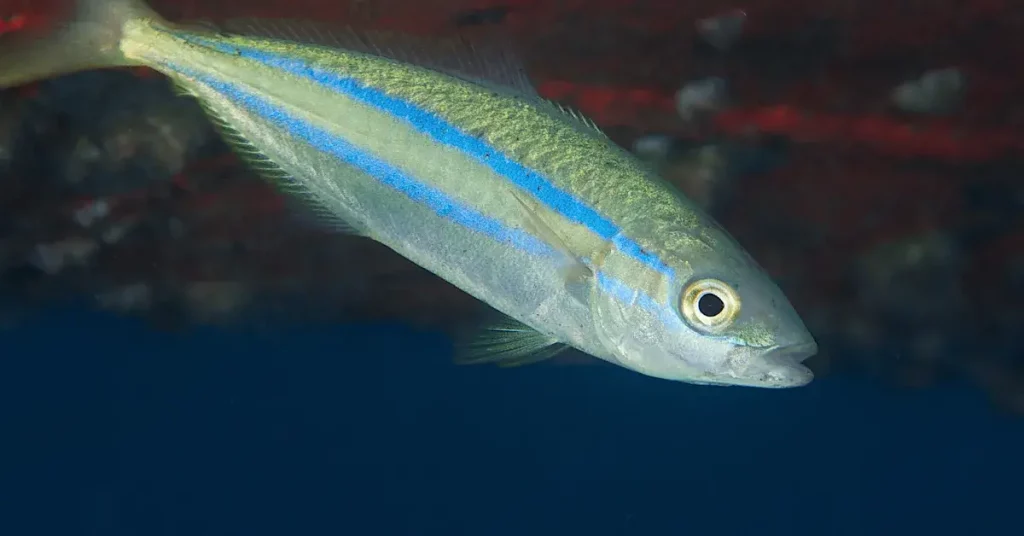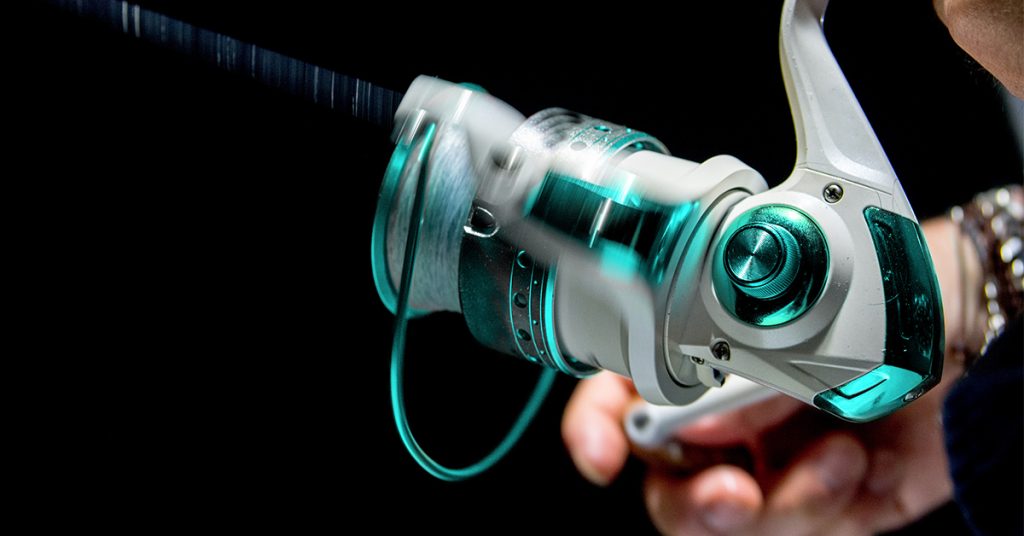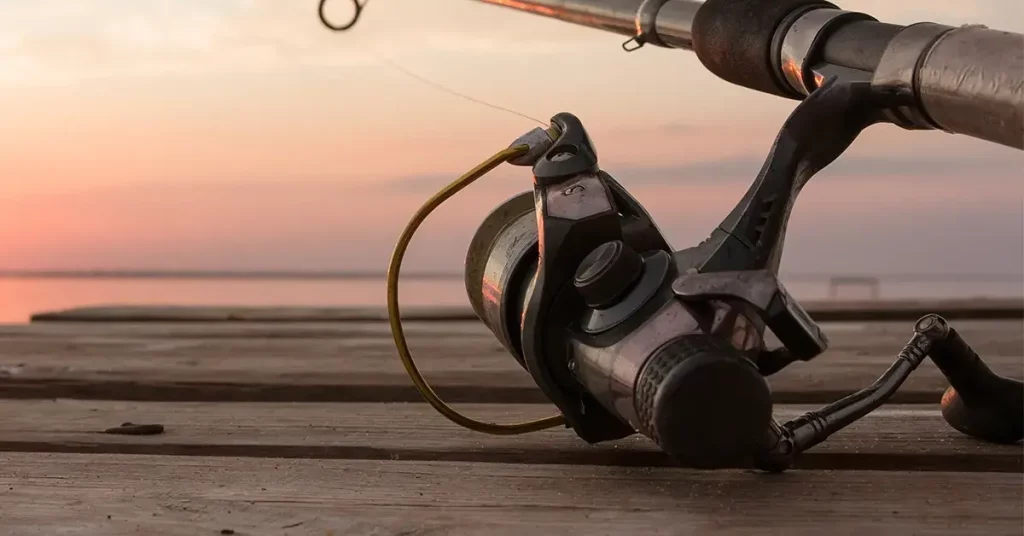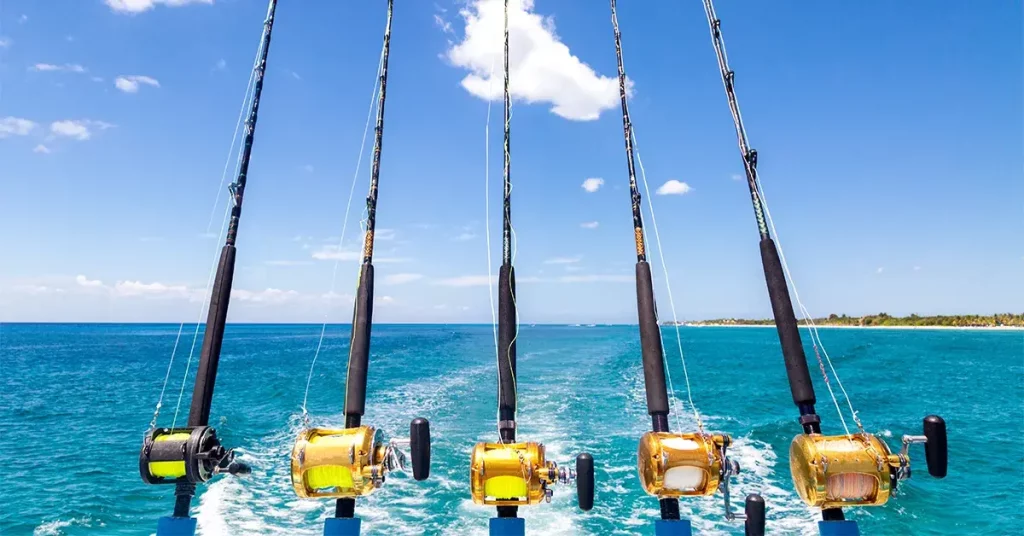Blue runner fish are one of the most common species in the Jack family, and are prized both as a light tackle gamefish and as live bait for larger fish like cobia, amberjack, and billfish.
They’re plentiful along coastal areas on both sides of the Atlantic Ocean, from Brazil to Canada in the western Atlantic, and from Angola to Great Britain in the eastern Atlantic. Blue runners are notoriously strong for their size, which makes them a lot of fun to catch on light or ultralight tackle.
Let’s take a look at this humble fish in greater detail, so you’ll know how to locate, catch, cook and rig blue runner fish as bait.
Blue Runner Overview

Blue runner fish (Caranx crysos), also known as the Bluestripe Jack, Hardtail Jack and Egyptian Scad are a predatory, schooling fish that lives primarily inshore and feeds on crustaceans and other invertebrates. Juveniles and larvae live in open ocean, using sargassum mats and jellyfish as cover until they’re large enough to move inshore.
They look similar to other Jack species, with elongated football shaped bodies. They have a light olive to dark greenish-blue coloration, with silvery flanks and bellies. Hard ‘scutes’, which are basically large bony protrusions, are present along their lateral lines all the way to the tail.
They’re a moderately large species, reaching up to 28 inches and 11 pounds, although most are significantly smaller, at around 14 inches and 1 to 2 pounds each. The fish is a significant commercial catch, with 6000 to 7000 tons caught annually in the Americas.
Blue runner is popular as a recreational gamefish, particularly with light spinning tackle or saltwater fly gear. Most recreational anglers toss them back if they’re not planning to use them as bait, as they can be a little tricky to clean and cook due to their tough scutes along the lateral line.
Habitat
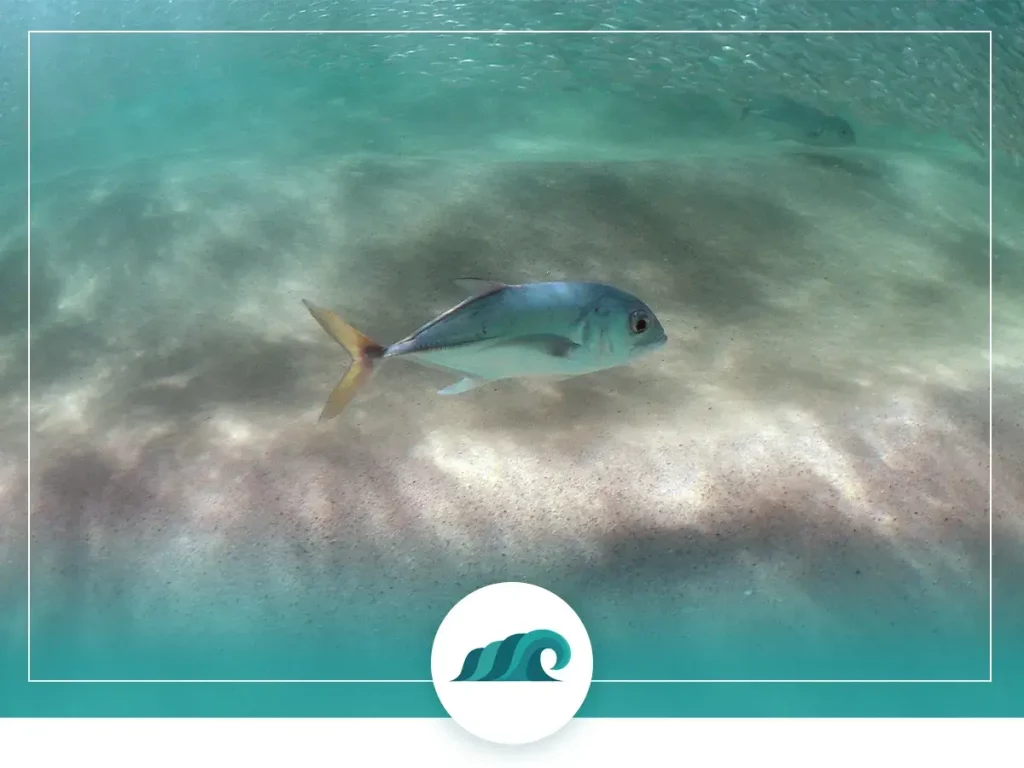
Blue runners can be found both inshore and offshore, with mature adults inhabiting reefs, lagoons, and manmade structures like buoys, wrecks, and oil and gas platforms.
Larvae and early juveniles remain offshore in cover between 30 to 60 feet deep, until they’re large enough to move inshore. Older juveniles tend to inhabit inshore lagoons, mangrove forests, and seagrasses. When they reach sexual maturity, they move to deeper outer reefs.
Most blue runners are found between the surface and 1000 feet deep, although there is some evidence they will reside at much deeper depths if reef cover is available.
How to Catch Blue Runner Fish?
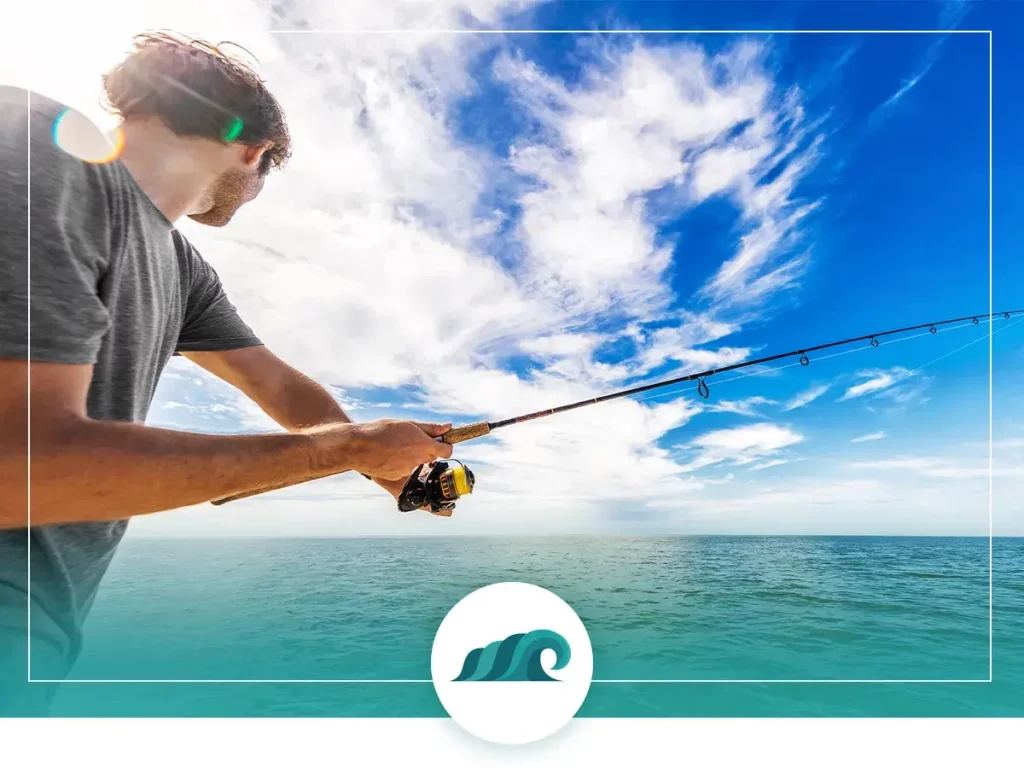
Blue runner can be caught using several different lures and baits, including spoons, jigs, and soft plastics.
Sabiki and fish finder rigs used in conjunction can be particularly effective, with the fish finder rig used to troll and locate a school, and sabiki rigs for catching multiple fish on a single line.
A fish finder rig is useful for slow trolling. It’s essentially a sinker attached to your main line, with a barrel swivel and a 2 to 3-foot leader ending in a small #6 hook. Squid and shrimp both work well as baits for your rig.
When using a sabiki rig, you’ll want to go with a heavy-duty main line (at least 40 lbs. test), so it can be used repeatedly without worry. Tie a 2 ounce or heavier weight to the end of the rig to prevent the blue runners from tangling up your rig. Check out the R&R GI-6 Sabiki Goggle Eye Rig for a highly effective blue runner sabiki rig.
If you’re just looking to fill your bait well up with blue runners, chumming the water and then tossing a 10 to 12-foot throw net over them can also be highly effective.
How to Rig Blue Runners as Bait?
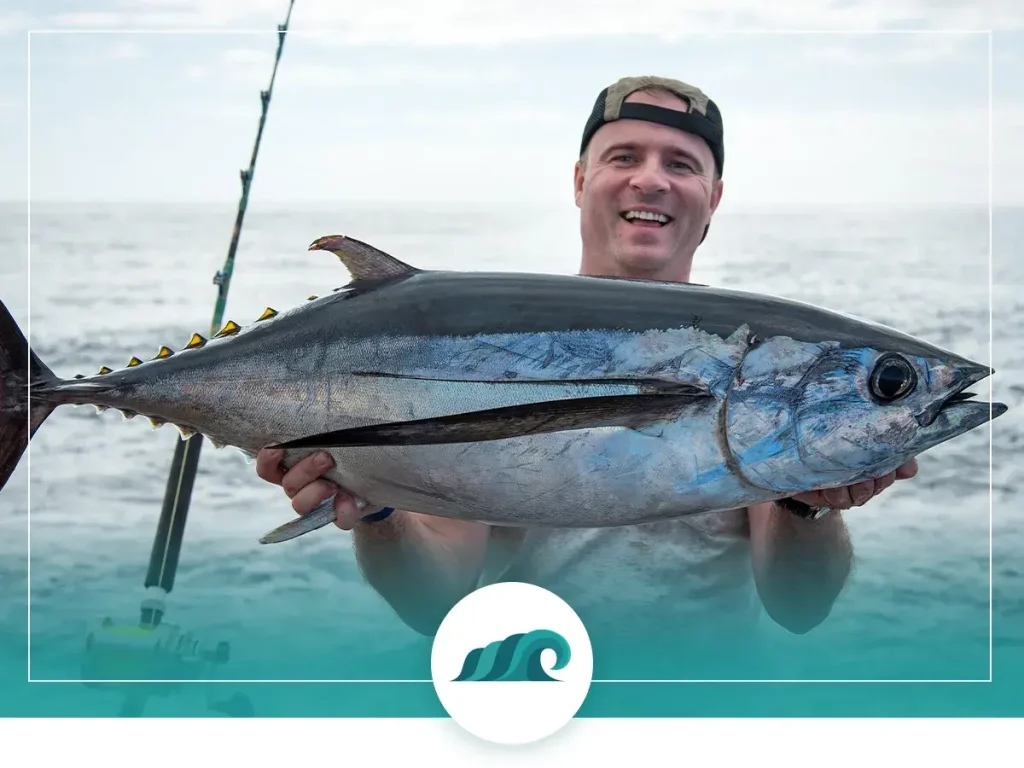
When you’re going after larger species like amberjack, Dorado, grouper, or tuna, blue runners can be highly effective live bait. Once you’ve filled up your livewell with fresh hardtails, you’ll need to know how to rig them effectively.
Here’s are several ways to rig a live blue runner:
- Pin the hook through the nostrils with a size 6/0 circle hook. This is ideal for casting, slow-trolling, and fishing in current.
- A J-hook through the back of the head, right ahead of the dorsal fin is great for faster trolling, drifting, and bottom fishing.
- When targeting kingfish, attach a treble hook in the back towards the tail, and connect to your J-hook with a short wire trace. This will help avoid short bites.
Is Blue Runner Good to Eat?

While many anglers regard blue runners only as a baitfish, they are actually quite delicious if prepared properly. They’re an oily fish, with dark red colored flesh, somewhat similar to mackerel or herring in taste. While they’re not popular as an eater in the US, they’re eaten extensively in other parts of the word including the Philippines, India, Thailand, and Turkey.
Another challenge with blue runners is their bony scutes that make filleting them a challenge to the uninitiated.
Here’s how to fillet a blue runner:
- Use your knife to make an incision right behind the head/gills.
- Run your knife along the top of the back and out towards the tail.
- Make shallow cuts running the knife along the backbone until you reach the spine.
- Push the knife through to the other side of the belly near the anal fin.
- Run your knife towards the tail and cut through the scutes (this can be a little tough).
- Now run your knife towards the head and remove the fillet.
- Repeat on the other side.
- Run your knife between the skin and meat while firmly pressing on the skin to keep it in place.
- Now you can trim the dark meat around the bloodline (if desired).
Check out this detailed video for a hands-on illustration of cleaning blue runners:
Blue Runner Recipe
Ingredients:
- 4 fresh blue runner fillets, trimmed of dark meat
- 1 lemon, cut into wedges
- 2 cloves garlic, minced
- Sea salt and fresh pepper
- 3 tablespoons olive oil
- Creole seasoning
Directions:
- Coat blue runner fillets in olive oil, salt, pepper, garlic, and creole seasoning. Let marinade for at least 30 minutes.
- Heat skillet to medium-high, and add fillets to pan, being careful not to crowd the pan.
- Fry until cooked all the way through, about 4 to 5 mins total.
- Remove from the pan and serve with lemon slices.

